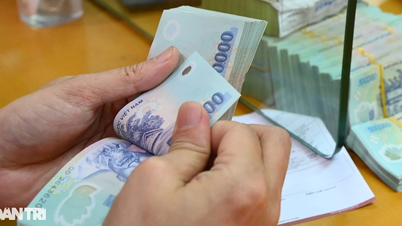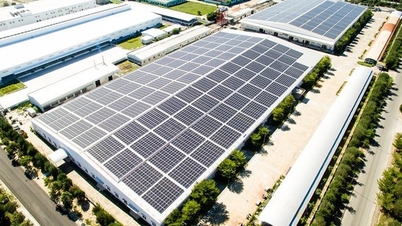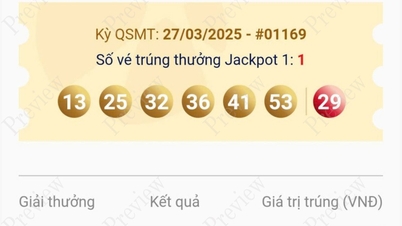ANTD.VN - By February 29, 2024, economic credit decreased by 0.72% compared to the end of 2023. However, the rate of decrease in February slowed down (-0.05%) compared to January (-0.6%).
On the morning of March 14, Prime Minister Pham Minh Chinh and Deputy Prime Minister Le Minh Khai chaired a conference to deploy monetary policy management tasks in 2024, focusing on removing difficulties for production and business, promoting growth and stabilizing the macro-economy.
Reporting at the meeting, Permanent Deputy Governor of the State Bank of Vietnam Dao Minh Tu said that by the end of 2023, credit in the whole economy will increase by 13.78% compared to the end of 2022.
Due to the seasonal factor of the Lunar New Year and the economy's low capital absorption capacity, by February 29, 2024, economic credit decreased by 0.72% compared to the end of 2023. However, the rate of decrease in February slowed down (-0.05%) compared to January (-0.6%).
With abundant liquidity and plenty of room for credit growth, credit institutions currently have favorable conditions to provide loans to the economy.
The State Bank of Vietnam said that the current decrease is in most economic sectors and fields. There are two areas that have grown in the first two months of the year, namely real estate credit, up 0.23% compared to the end of 2023, and securities credit, up 2.56% compared to the end of 2023.
 |
Permanent Deputy Governor of the State Bank Dao Minh Tu |
Explaining the reasons for negative credit growth in the first two months of the year, the Deputy Governor said that firstly, the world economy was unpredictable, inflationary pressure and world interest rates were high, the USD and world gold prices were complicated; the difference in USD-VND interest rates... were factors that negatively impacted the stability of the domestic VND/USD exchange rate, especially when VND interest rates were expected to continue to decrease.
Second is the difficulty in granting credit. Credit growth in the first two months of the year was still negative due to many obstacles.
Objectively, due to seasonal factors, demand for credit capital often increases at the end of the year and before Tet, leading to difficulty in rapidly increasing credit scale in the first two months of the year.
The economy's demand and capital absorption capacity are low: Many businesses are shrinking or ceasing operations due to inflationary pressure, rising material prices; lack of orders; many input factors, high production and business costs, so there is no need to borrow capital; people increase reserves and reduce spending loans; real estate credit accounts for about 21% of general credit, high increase/decrease in real estate credit often causes the whole system's credit to increase/decrease.
In addition, some customer groups have needs but do not meet the loan conditions; especially small and medium enterprises due to small capital scale, limited capacity, lack of feasible business plans, solutions to increase credit access through the Credit Guarantee Fund, Small and Medium Enterprise Development Fund... have not been very effective.
Along with that are difficulties in implementing a number of credit programs and policies such as: for the 120,000 billion VND Program, legal regulations related to social housing projects (land funds, procedures, purchase and sale procedures, valuation...) still have many problems;
The number of projects to renovate and rebuild apartments is very small; some conditions for home buyers are no longer suitable; for consumer loan packages, workers' incomes have decreased in the context of high unemployment and job losses, so there is no source to repay debts, leading to a decrease in demand for consumer credit...
Regarding subjective reasons, the State Bank of Vietnam believes that some banks are still cautious in granting credit due to increasing bad debts. Some old debts with high interest rates are slowly being adjusted down to support businesses and individuals to borrow capital.
Some banks' lending procedures are still slow to improve, especially the loan approval time is still long, and the valuation and decision on mortgage assets are still too cautious.
The implementation of the collateral mechanism is still inflexible, mainly relying on mortgaged assets, especially in the context of a sluggish real estate market. There is a lack of connection, interaction, sharing, and cooperation between customers and banks in directly discussing and finding solutions to capital difficulties.
Capital mobilization through stocks, bonds, and FDI capital has increased slowly, difficulties in the bond and real estate markets have not been fundamentally and thoroughly resolved... causing capital sources for growth to continue to focus on bank credit, the Credit/GDP ratio to increase sharply (about 133% at the end of 2023, up from about 125% at the end of 2022), posing potential risks to the safety of the financial and monetary system.
Source link




![[Photo] Students of Binh Minh Primary School enjoy the full moon festival, receiving the joys of childhood](https://vphoto.vietnam.vn/thumb/1200x675/vietnam/resource/IMAGE/2025/10/3/8cf8abef22fe4471be400a818912cb85)


![[Photo] Prime Minister Pham Minh Chinh chairs meeting to deploy overcoming consequences of storm No. 10](https://vphoto.vietnam.vn/thumb/1200x675/vietnam/resource/IMAGE/2025/10/3/544f420dcc844463898fcbef46247d16)





































































































Comment (0)